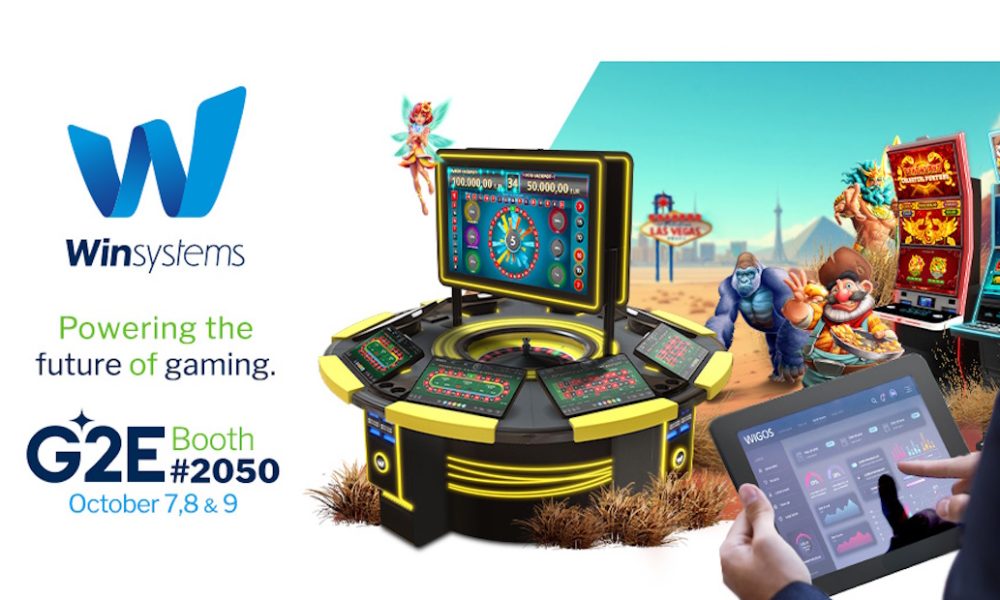

Latest News
Global Gambling Market Opportunities and Strategies Report 2022-2030: Shift In Interests Towards Online And Physical Sportsbook Betting
The “Gambling Global Market Opportunities And Strategies To 2030, By Type, Channel Type” report has been added to ResearchAndMarkets’ offering.
The global gambling market reached a value of nearly $465,763.9 million in 2020, having increased at a compound annual growth rate (CAGR) of 2.1% since 2015. The market is expected to grow from $465,763.9 million in 2020 to $674,703.9 million in 2025 at a CAGR of 7.7%. The market is expected to grow from $674,703.9 million in 2025 to $895,720.3 million in 2030 at a CAGR of 5.8%.
The gambling market consists of sales of gambling services and related goods by entities (organizations, sole traders and partnerships) that operate gambling facilities, such as casinos, bingo halls, video gaming terminals, lotteries, and off-track sports betting. Gambling is the act of wagering money or something of value on an event with an uncertain outcome that is not under gambler control, with an intent of winning money.
Growth in the historic period resulted from growth of the experience economy, favorable visa policies and new initiatives, emerging markets growth, growth in female gamblers, rapid urbanization, legalization of gambling and rise in mobile gambling.
Going forward, legalization of gambling, changing consumer gambling habits and use of social media are expected to drive the market. Stringent government regulations on gambling, demographic changes and problem gambling are major factors that could hinder the growth of the gambling market in the future.
The gambling market is segmented by type into casino, lotteries, sports betting and others. The lotteries market was the largest segment of the gambling market by type, accounting for 52.5% of the total market in 2020. Going forward, sports betting segment is expected to be the fastest growing segment in the gambling market, at a CAGR of 8.4%.
The gambling market is also segmented by channel type into offline, online and virtual reality (VR). The offline market was the largest segment of the gambling market by channel type, accounting for 88.0% of the total market in 2020. Going forward, the virtual reality (VR) segment is expected to be the fastest growing segment in the gambling market, at a CAGR of 17.7%.
Asia Pacific was the largest region in the global gambling market, accounting for 38.2% of the total in 2020. It was followed by North America, Western Europe and then the other regions. Going forward, the fastest-growing regions in the gambling market will be Middle East and Eastern Europe, where growth will be at CAGRs of 12.0% and 10.8% respectively. These will be followed by Africa and South America, where the markets are expected to register CAGRs of 10.1% and 9.9% respectively.
The gambling market is relatively fragmented, with a large number of players. The top ten competitors in the market made up to 20.10% of the total market in 2020. This can be due to the existence of number of local players in the market serving customers in particular geographies.
China Welfare Lottery was the largest competitor with 10.85% of the market, followed by The Hong Kong Jockey Club with 6.01%, MGM Resorts International with 0.62%, Crown resorts with 0.51%, Caesars Entertainment Corporation with 0.50%, Las Vegas Sands Corporation with 0.49%, Melco International Development Ltd. with 0.31%, Genting Group with 0.30%, Wynn Resorts Ltd. with 0.27%, and Galaxy Entertainment Group Limited with 0.23%.
The top opportunities in the gambling market segmented by type will arise in the lotteries segment, which will gain $113,324.9 million of global annual sales by 2025. The top opportunities in the gambling market segmented by channel type will arise in the offline segment, which will gain $155,521.3 million of global annual sales by 2025. The gambling market size will gain the most in China at $29,826.3 million.
Market-trend-based strategies for the gambling market includes investing in gambling games that use AR and VR technology, adopt advanced technologies to introduce live casinos, introduce hybrid games to drive engagement, adopt advanced security measures to prevent fraud, adopt cryptocurrencies to improve transparency in transactions, provide large-format slot machines, integrate robots with artificial intelligence, invest in providing mobile gambling services, offering offshore betting services, employ big data analytics, invest in branded slot games and gambling services through smart watch applications.
Key Topics Covered:
1. Gambling Market Executive Summary
2. Table of Contents
3. List of Figures
4. List of Tables
5. Report Structure
6. Introduction
6.1. Segmentation By Geography
6.2. Segmentation By Type
6.3. Segmentation By Channel Type
7. Gambling Market Characteristics
7.1. Market Definition
7.2. Segmentation By Type
7.2.1. Casino
7.2.2. Lotteries
7.2.3. Sports Betting
7.2.4. Others
7.3. Segmentation By Channel Type
7.3.1. Offline Gambling
7.3.2. Online Gambling
7.3.3. Virtual Reality (VR) Gambling
8. Gambling Market, Supply Chain Analysis
8.1.1. Resources
8.1.2. Gambling Services Providers
8.1.3. Other Service Providers
8.1.4. End Users
9. Gambling Market, Product/Service Analysis – Product/Service Examples
10. Gambling Market Customer Information
10.1. Shift In Interests Towards Online And Physical Sportsbook Betting
10.2. Gamblers Will Return To Casinos Post COVID-19
10.3. Online Gambling Is the Most Popular Gambling Behavior
10.4. Mobile Devices Have Become the Most Popular Gambling Medium
10.5. Betting Over Legal Sportsbooks Is The Most Popular Gambling Behavior
10.6. Casinos Are Considering Adopting Skill-Based Games To Attract New Gamers
10.7. Most Social Gamblers Have Not Faced Issues From Their Gambling Activity
10.8. Australians Are Concerned About Over Exposure To Gambling Advertisements
10.9. The National Lottery Draws Are The Most Popular Gambling Activity
10.10. Rise In Gambling Activity Among Singapore Residents
10.11. Americans Believe That Sports Gambling Is Moral, But Illegal
10.12. Increased Funding For Problem Gambling Services In The United States
11. Gambling Market Trends And Strategies
11.1. Adoption Of Augmented and Virtual Reality In Casinos
11.2. Increase In Gambling Legislations
11.3. Live Casinos
11.4. Hybrid Games
11.5. Security In Online Gambling
11.6. Cryptocurrency In Gambling
11.7. Large-Format Slot Machines
11.8. Sports Betting Bots
11.9. Mobile Gambling
11.10. Online Casinos
11.11. Offshore Sports Betting
11.12. Big Data Analytics in Sports Betting
11.13. Branded Slots
11.14. Slots On Smart Watches
12. Gambling Market Opportunity Assessment, PESTEL Analysis
12.1. Political
12.1.1. Favorable Tourism Policies
12.1.2. Political Changes
12.1.3. Government Policies
12.1.4. Tax Laws
12.2. Economic
12.2.1. Disposable Incomes
12.2.2. Interest Rates
12.3. Social
12.3.1. Changing Demographics
12.4. Technological
12.4.1. Technological Advances
12.5. Environmental
12.5.1. Extreme Weather Conditions
12.6. Legal
12.6.1. Legality Of Gambling
13. Gambling Market Regulatory Landscape
14. Emergence of Augmented Reality and Virtual Reality in Gambling
14.1. Augmented Reality (AR)
14.2. Virtual Reality (VR)
15. Illegal Gambling Market
16. Gambling Competitions
16.1. World Series Of Poker
16.2. DraftKings Championship Series
16.3. World Casino Championship
17. Impact Of COVID-19 On The Gambling Market
17.1. Introduction
17.2. Closure of Land Casinos
17.3. Shift Towards Online Gambling
17.4. Impact On Companies
17.5. Future Outlook
Companies Mentioned
- China Welfare Lottery
- The Hong Kong Jockey Club
- MGM Resorts International
- Crown Resorts
- Caesars Entertainment Corporation
- Las Vegas Sands Corporation
- Melco International Development Ltd.
- Genting Group
- Wynn Resorts Ltd.
- Galaxy Entertainment Group Limited
Conferences
Win Systems will showcase its latest innovations at G2E Las Vegas 2025

Win Systems will once again be present at Global Gaming Expo (G2E) Las Vegas 2025, one of the most important events in the industry worldwide. The expo will take place from October 7 to 9 at The Venetian Expo and Win Systems will welcome all its clients at booth #2050.
During the event, the company will showcase multiple innovations across its different business lines, specially developed and adapted to the needs of each market. Within the Systems division, Win Systems will present innovations designed for both casinos and the route market, as well as an important new development in its Electronic Payment Solutions Business Unit.
In addition, the company will unveil new models of roulette, slots, and games that promise to impress operators and players alike, consolidating its position as a leader in innovation and entertainment experiences.
“G2E Las Vegas is the ideal stage to showcase our latest innovations and the result of months of work and development. This year we arrive with proposals designed to meet the challenges and opportunities of each market, always maintaining our mission to continue driving the future of Gaming,” said Eric Benchimol, CEO of Win Systems.
Win Systems invites all industry professionals to visit its booth to experience its latest launches firsthand and see how its comprehensive solutions continue to set trends in the sector.
For more information about Win Systems and its cutting-edge gaming solutions, visit winsysgroup.com
The post Win Systems will showcase its latest innovations at G2E Las Vegas 2025 appeared first on Gaming and Gambling Industry in the Americas.
Amanda Slonzon VP of Compliance and Regulatory Strategy at RubyPlay
RubyPlay’s US Playbook – Turning compliance into a growth engine

After securing entry into its second US state, and with a third firmly in sight, RubyPlay is sharpening its compliance strategy to balance speed with precision. Amanda Slonzon, VP of Compliance and Regulatory Strategy, explains how the company’s US Playbook is helping to turn regulation into a growth engine, from leveraging New Jersey as a benchmark, to preparing for Pennsylvania’s unique challenges, and building trust-based relationships with regulators and partners across the industry.
When people think about compliance in the US iGaming industry, they often imagine it as the handbrake that slows expansion and stifles innovation. For me, it is the opposite as compliance sits in the driver’s seat. It is not simply a support function but a product in itself that enables us to grow faster, enter new markets with confidence and strengthen our relationships across the industry.
The US online casino market is both highly promising and highly fragmented. Only seven states currently regulate iGaming and each has its own framework. Navigating this landscape requires a deep understanding of both the common threads between states and the subtle differences that can make or break a market entry.
This is why we have developed a US Playbook at RubyPlay, which is a detailed, in-house framework for understanding and applying state-by-state requirements in a way that is tailored to our products and infrastructure. With it, our compliance and regulatory specialists break down each regulation, interpret it in the context of our business, and share that knowledge across the company.
Market comparisons
New Jersey will always be the starting point for most operators and suppliers entering the US. It was the pioneer of state-level regulation and, in many ways, still sets the standard for others to follow. Meeting New Jersey’s requirements ensures a company is well-prepared for other states, many of which recognise its certifications. Delaware, for example, places direct reliance on New Jersey approvals, a pragmatic approach that can streamline entry for those already licensed in the Garden state. But even with these efficiencies, each state demands its own level of preparation and adaptation.
Regulators in the US take compliance very seriously and ensure that every technical aspect of a business meets their requirements. Unlike some EU markets, where providers may not need a B2B license, every US state requires B2B licensing through a thorough, state-specific process. While major shifts are rare, when they occur they can significantly impact the industry. Right now, sweepstakes is the most talked-about development, and with New Jersey’s Governor having recently signed the ban into law, we are seeing a wave of prohibition that will have a major impact across the industry. Our role is to remain attentive, follow changes daily, and ensure we stay as compliant as we intend to be.
Every state also has its own technical standards, licensing requirements, tax structures, and approaches to product approval. For example, Pennsylvania applies the highest tax rate on operators in the country yet remains one of the most attractive among operators. It also has a deeply ingrained gaming culture and a large, active player base. Entering a state like Pennsylvania, which is a key target for RubyPlay in 2026, is not just about passing compliance checks but more about understanding the regulator’s expectations, the market’s economic realities and the cultural context of its players.
Fostering close relationships
One of the most important aspects of operating in the US is the strength of relationships with key stakeholders across the entire ecosystem. I have always believed that a strong relationship with the regulator is just as critical as meeting their requirements on paper. We work to ensure that regulators see us as partners who bring solutions, not problems. We communicate openly and demonstrate that we take their rules as seriously as they do. The same process applies to how we work alongside our industry partners. From platform providers or operator customer, we approach every partnership as a collaborative effort to succeed together.
Culture plays a vital role in how we approach regulation. Compliance is considered a technical discipline, but ultimately it is powered by people who care about getting processes and frameworks robust. I am proud to lead a team that is collaborative and solution-oriented. One of my proudest moments recently came during a recruitment process where I was speaking with a candidate for a role within our compliance team. She told me she had been following RubyPlay closely and was so impressed by our company culture, the pride we take in our work and the way we treat our people, that she was willing to relocate to another country just to join the team. It is a real story that speaks to the environment we have built.
Regulation in the US is not going to advance overnight. The state-by-state approach will remain and evolve, and new product categories will emerge that challenge existing frameworks. My perspective is that the companies who thrive will be the ones who embrace this complexity, invest in understanding it deeply, and treat compliance as a strategic asset rather than an operational hurdle.
The US Playbook we have developed is our way of making that happen. It is an ever-evolving strategy that keeps us compliant, competitive and ready for whatever comes next.
The post RubyPlay’s US Playbook – Turning compliance into a growth engine appeared first on Gaming and Gambling Industry in the Americas.
Aviatrix
Aviatrix partners with TQJ and joins the Bet do Milhão portfolio

The popular crash game Aviatrix has entered a strategic partnership with Brazilian operator Todos Querem Jogar (TQJ) to bring the hit title to the recently launched brand Bet do Milhão.
TQJ is a Brazil-licensed operator and an investee company of the Silvio Santos Group, one of the country’s largest media conglomerates. Its first brand, Bet do Milhão, is inspired by Show do Milhão, the iconic Brazilian TV game show, and debuts with a full portfolio of sports betting and online gaming, with a strong focus on innovation, security, and responsible play.
Through the partnership, Bet do Milhão players will now enjoy the full Aviatrix experience, including one of the most dynamic and engaging crash game mechanics in the world.
Anastasia Rimskaya, Chief Account Officer at Aviatrix, said: “This partnership with TQJ and Bet do Milhão is a perfect fit. Aviatrix is about delivering exciting and intuitive gameplay, which aligns perfectly with the Bet do Milhão concept. This is another key milestone in establishing Aviatrix as one of the most popular online casino games in Brazil.”
Leonardo Sampaio, Chief Operating Officer at Todos Querem Jogar, added: “We want to combine the Brazilian way of having fun with the very best in technology and content available in the market. That’s why bringing Aviatrix to our new brand was a priority. We are excited to build a long-term relationship with the team and are confident the game will be hugely successful with our players.”
Aviatrix has been rapidly expanding in Brazil in recent months. In April 2025, the game received full federal certification to operate via licensed operators nationwide, as well as a dedicated certification for the state of Paraná.
The post Aviatrix partners with TQJ and joins the Bet do Milhão portfolio appeared first on Gaming and Gambling Industry in the Americas.
-

 gaming3 years ago
gaming3 years agoODIN by 4Players: Immersive, state-of-the-art in-game audio launches into the next generation of gaming
-
EEG iGaming Directory9 years ago
iSoftBet continues to grow with new release Forest Mania
-
News7 years ago
Softbroke collaborates with Asia Live Tech for the expansion of the service line in the igaming market
-
News7 years ago
Super Bowl LIII: NFL Fans Can Bet on the #1 Sportsbook Review Site Betting-Super-Bowl.com, Providing Free Unbiased and Trusted News, Picks and Predictions
-
iGaming Industry8 years ago
Rick Meitzler appointed to the Indian Gaming Magazine Advisory Board for 2018
-
News7 years ago
REVEALED: Top eSports players set to earn $3.2 million in 2019
-
iGaming Industry8 years ago
French Senator raises Loot Boxes to France’s Gambling Regulator
-
News7 years ago
Exclusive Interview with Miklos Handa (Founder of the email marketing solutions, “MailMike.net”), speaker at Vienna International Gaming Expo 2018









